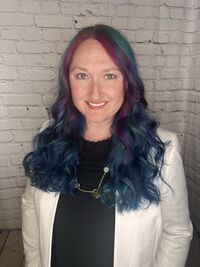Editor's Corner
Together, We Shape the SEBoK
At a recent conference of the American Society for Engineering Management (ASEM), I had one of those moments that reminds me why I love the systems engineering community. Between sessions, I struck up a conversation with a few attendees and quickly discovered that ASEM has its own body of knowledge. As we compared notes, I realized how much overlap exists between our work in systems and engineering management as well as how rarely we stop to connect those dots. Even more surprising was that several INCOSE colleagues I know well were there, simply wearing a different “hat.” One new conference friend and I joked that we had each found a new “conference bestie” in the most unexpected of places. That small moment of discovery captured something that sits at the heart of the SEBoK: collaboration.
The SEBoK isn’t just a collection of articles. It’s a community space — a shared effort built by and for the global systems engineering ecosystem. Our strength lies in the ways people and organizations come together around it.
The Power of Partnership
From the beginning, the SEBoK has been sustained by partnership. In 2009, when BKCASE – the parent project that kicked off the SEBoK – was created, Art Pyster and David Olwell brought together over 70 authors representing government, industry, and academia from around the world. It was only through this incredibly diverse group, and Art and Dave’s leadership, that the SEBoK was able to become what it is today: an authoritative, evolving body of knowledge that reflects the diversity of our global systems community.
The three steward organizations – International Council on Systems Engineering (INCOSE), the IEEE Systems Council (previously the Computer Society), and the Stevens Institute of Technology’s Systems Engineering Research Center (SERC) – each bring unique perspectives and strengths. Together, they ensure the SEBoK continues to evolve as both an authoritative reference and a bridge across disciplines. This multi-institution collaboration is part of what makes the SEBoK so distinctive: no single organization could achieve the same reach or relevance alone. That spirit of cooperation extends far beyond our stewards. Over the past year, several SEBoK editorial board members have played key roles in aligning updates across related efforts, most notably the INCOSE Systems Engineering Handbook v. 5.0 and the new version of ISO/IEC/IEEE 15288. These efforts have brought the systems community into closer alignment, helping practitioners speak a more common language. Special thanks go to David Endler, Garry Roedler, and Mike Yokell for their leadership in this space. Our Lead Editor for Part 6, Caitlyn Singam, continues to champion collaboration with other professional societies through both her work on the SEBoK and the SySTEAM initiative. Judith Dahmann and Michael Henshaw bring the knowledge and activities of the INCOSE Systems of Systems (SoS) Working Group (WG) forward into the SEBoK. Gary Smith, lead editor of Part 2, is also the current President of the International Society for the Systems Sciences (ISSS). Javier Calvo-Amodio – incidentally one of the colleagues I got to see at ASEM – is also very engaged in the systems science community. Former editor Phyllis Marbach has supported coordination between the International Association for the Engineering Modelling, Analysis & Simulation (NAFEMS) and the SEBoK for modeling and simulation terminology.
I won’t try to create an exhaustive list of the ways in which our authors, editors, and stewards have supported and embraced cross collaboration with other professional societies and disciplines – I would be sure to leave someone or some collaboration out. But these examples help to demonstrate how the broader community has come together to build the SEBoK and, I hope, how the SEBoK represents an avenue to bring the community together.
SEBoK’s collaborative ecosystem reaches well beyond standards. It connects to other bodies of knowledge and communities of practice — whether in engineering management, software systems, or emerging areas like digital engineering and AI. These intersections strengthen the SEBoK, ensuring that it remains relevant in a rapidly evolving landscape.
The SEBoK’s foundation in the BKCASE initiative set the stage for this kind of openness. Over time, our community has embraced that legacy by continuously building connections: to competency frameworks, to digital transformation initiatives, and to the growing body of knowledge on systems engineering for AI-enabled systems. Each of these relationships brings fresh insights and helps us reflect the realities of modern systems practice.
At its core, collaboration is about people. It happens in meetings and working groups, but also in the informal spaces — hallway conversations, virtual whiteboards, and chance encounters at conferences. Every relationship built across disciplines or organizations strengthens our collective ability to advance the field.
What I find most inspiring is how naturally collaboration emerges when systems engineers get together. Whether we’re debating terminology, aligning frameworks, or brainstorming new ways to teach the next generation, our shared curiosity and systems thinking mindset draw us toward connection. Those relationships are what keep the SEBoK vibrant and alive.
Looking Ahead
As we close out 2025, our focus is turning toward the future. In December, we’ll be sharing the SEBoK Together initiative – an open invitation for the entire community to help shape what comes next. This effort will guide our work over the next year as we continue to modernize the SEBoK’s content, structure, and integration with the broader systems engineering ecosystem featuring weekly opportunities for engagement. Whether you contribute new material, provide feedback, or simply share how you use the SEBoK in your organization, your participation matters. Collaboration has always been the SEBoK’s greatest strength. Together, we can ensure that it remains not just a guide to systems engineering knowledge, but a living example of what collaboration can achieve.
Sincerely,
